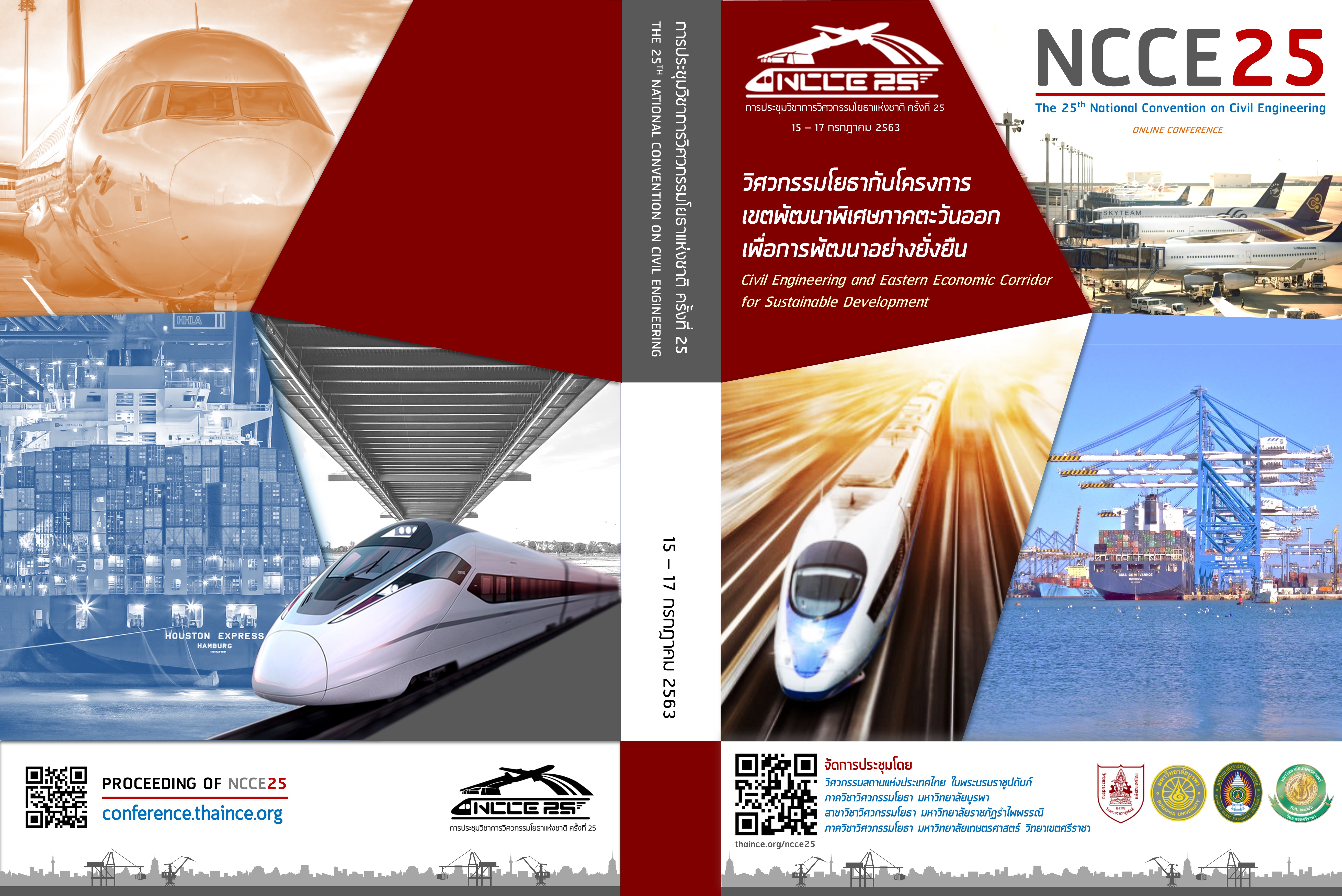Effect of Silica fume on Chloride Penetration Resistance of Concrete
Keywords:
ความต้านทานการแทรกซึมคลอไรด์, กำลังอัด, ซิลิก้าฟูม, คอนกรีตAbstract
This research aims to study the chloride penetration resistance and compressive strength of concrete containing silica fume. The binder content in concrete was replaced by silica fume at 5%, 7.5%, 10% and 15% by weight of binder. The water to binder ratios were used at 0.40 and 0.50. The rapid chloride penetrations of concrete were determined at 7, 28 and 91 days of water curing. The compressive strengths of concrete were tested at 7, 14, 28, 56 and 91 days of water curing. From the experimental results, it was found that the use of silica fume to replace binder content in concrete resulted in increasing the chloride penetration resistance and compressive strength of concrete. Concrete with 15% silica fume replacement had the highest chloride penetration resistance and compressive strength. Moreover, concretes containing silica fume at lower water to binder ratio had higher chloride penetration resistance and compressive strength than that at higher water to binder ratio.
Downloads
References
[2] Tangtermsirikul, S. (2003). Durability and mix design of oncrete (1st edition). Pathum Thani: Thammasat University, Rangsit Campus.
[3] Siddiuqe, R. (2011). Utilization of silica fume in concrete: Review of hardened properties. Resource, Conservation and Recycling; 55, pp. 923-932.
[4] Barbhuiya, S. and Qureshi, M. (2016). Effect of silica fume on the strength and durability properties of concrete. CESDOC, 2016, pp. 117-120.
[5] Khan, M.I. and Siddique, R. (2011). Utilization of silica fume in concrete: Review of durability properties. Resources, Conservation and Recycling, 57, pp. 30-35.
[6] Song, H.W., Jang, J.W., Saraswathy, V. and Byun, K.J. (2007). An estimation of the diffusivity of silica fume concrete. Building and Environment, 42, pp. 1358–1367.
[7] Bagheri, A.R., Zanganeh, H. and Moalemi, M.M. (2012). Mechanical and durability properties of ternary concretes containing silica fume and low reactivity blast furnace slag. Cement and Concrete Composites, 34, pp. 663–670.
[8] American Society for Testing and Materials (ASTM). (2000). ASTM C1202, Standard test method for electrical indication of concrete's ability to. resist chloride ion penetration.
[9] British Standards (BS). BS 1881-116, Method for determination of compressive strength of concrete cubes.
[10] Soutsos, M. (2010). 1st Edition. Concrete durability. Thomas Telford Limited.
[11] Gonen, T. and Yazicioglu, S. (2007). The influence of mineral admixtures on the short and long-term performance of concrete. Build. Environ, 42, pp. 3080-3085.
[12] Gjrov, 0.E. (1993). Durability of concrete containing condensed silica fume. ACI Special Publications SP, 79, pp. 695-708.
[13] Bagheri, AR., Zanganeh, H. and Moalemi, MM. (2012). Mechanical and durability properties of ternary concretes containing silica fume and low reactivity blast furnace slag. Cement and Concrete Composites, 34, pp. 663-670.
Downloads
Published
How to Cite
Issue
Section
License
บทความทั้งหมดที่ได้รับการคัดเลือกให้นำเสนอผลงานในการประชุมวิชาการวิศวกรรมโยธาแห่งชาติ ครั้งที่ 25 นี้ เป็นลิขสิทธิ์ของ วิศวกรรมสถานแห่งประเทศไทย ในพระบรมราชูปถัมภ์



